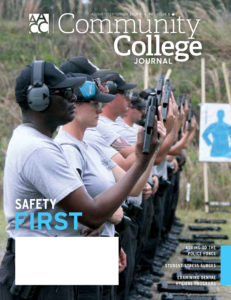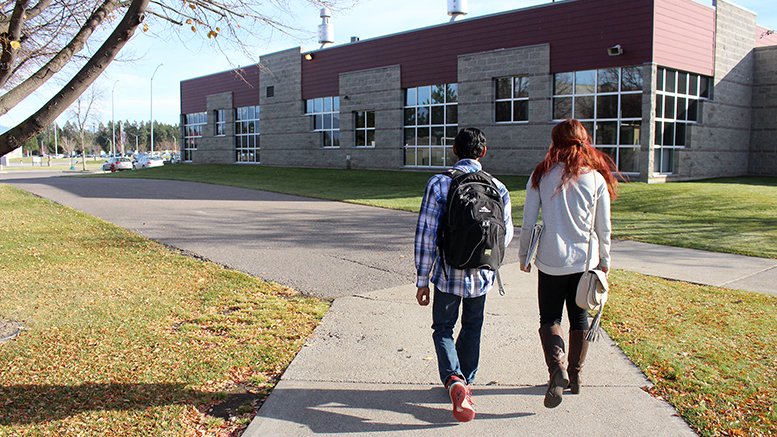Last year, Dr. Sue Stock joined the staff at the College of Lake County (CLC) in Grayslake, Illinois, to help revitalize the school’s mental health services. The college was in the process of shifting its model from a blended advising and counseling department to a new free-standing psychological services center.
“Although the folks in advising and counseling were doing wonderful things for students, we felt like there was a need for a separate center that was solely focused on providing mental health services,” says Stock, dean of the Counseling, Advising and Transfer Center at the college.
This article comes from the new issue of the Community College Journal, published by the American Association of Community Colleges.
The new counseling and psychological services department has a dedicated suite, support staff and confidential database and scheduling system with two full-time therapists, and it is in the process of hiring a third. The department also contracts with a local agency to provide part-time therapists. Students can access individual or group therapy. CLC is continuing to assess demand for mental health services among the 14,000 students on campus.
“This spring, in which we were staffed with 2.4 therapists, we ran a waiting list for about two and a half months, from March until the end of the semester,” Stock says. “Given that, it’s sort of hard to assess demand, because we’re not able to meet it.”
Too distressed to learn
The increase that the college is seeing speaks to a staggering national trend. In a report published by the Hope Lab for College, Community and Justice in 2016 called “Too Distressed to Learn? Mental Health Among Community College Students,” the report’s authors found that more than half of the 4,000 community college students surveyed were currently or recently experiencing a mental health condition.
The survey reveals higher rates than among students at four-year colleges, where studies estimate one in three students experience mental health conditions. But four-year colleges have more mental health services on campus than community colleges.
“What they found was that compared to four-year college peers, community college students were reporting that they were more stressed, that they had less social support, and that they had less access to mental health services,” says Stock, a former board member of the Association for University and College Counseling Center Directors. “That makes sense if you know community college students. Our students are working jobs and having kids and taking care of parents and playing all these different roles, so no wonder they’re more stressed.”
Graduation rates among the 12 million community college students in the U.S. are lower than their four-year counterparts, with 20 percent of first-time, full-time community college students completing a degree within three years. While many factors contribute to these graduation rates, the role mental health plays cannot be ignored, as conditions like depression are known to have adverse effects on academic success.
“Certainly, some students come to community college with some challenges academically, but more and more we are seeing these mental health issues as barriers,” Stock says.
The cost of untreated mental health conditions on community colleges has larger implications as well. The Institute of Medicine estimates the total cost of mental, emotional and behavioral disorders among people under age 25 to be $247 billion a year.
Shifting the stigma
The Center for Collegiate Mental Health found that between 2009 and 2015, colleges saw an increase in counseling center use by up to 40 percent, despite only a 5 percent increase in enrollment. The most common concerns among college students are anxiety and depression. Experts point out that this increase could be attributed to students being more willing to seek help.

There’s more in the August/September edition of Community College Journal.
“We have been really successful in encouraging people to seek services and reduce stigma. We’ve had federal, state and local funding — everything from the Garrett Lee Smith Memorial Act, which funds suicide prevention efforts, to various state efforts. We’ve been really good the last 10 years in K–12 encouraging people to get help,” Stock says. “So, in a lot of ways, this is our success. But the challenge is that I don’t know that the infrastructure is there to meet that success.”
Dr. Anthony Rostain, co-author of The Stressed Years of Their Lives, explained on NPR’s Fresh Air that students in the post-9/11 era have been exposed to trauma and uncertainty in the media (exacerbated by internet and 24-hour news cycles) and in their lives through school shootings, globalization and the 2008 economic recession.
Seeking mental health services can be particularly challenging for community college students, who tend to be uninsured or rely on public insurance more than four-year college students. Social support from friends, family and other networks also tends to be lower among community college populations, and food and housing challenges are more common.
Stock points out that faculty and staff are crucial in helping refer students to mental health services because they’re the ones who are seeing the students on a regular basis.
“They are the front line. They may see the student who is distressed or they may read the essay that indicates a student has had a particular experience. They are really important partners, because one of the things we know is a warm referral to services from somebody who knows you is far more successful than a cold call or just a flyer,” she says.
Meeting emotional needs in Montana
Flathead Valley Community College (FVCC) in Kalispell, Montana, has a full-time mental health counselor, Carlin Hale, available for free to its 3,600 students year-round. Hale says the most common issues she sees are anxiety, depression and trauma-related concerns.
“I get a lot of referrals for students who are feeling a lot of anxiety; they see this affecting their schoolwork,” she says. “School can be a lot to manage and so when they’re trying to juggle all of those things — school and life and home — and putting some kind of mental health concern on top of that, it can be a little overwhelming at times.”
At peak times of year — about a month into each semester — she sees at least 20 students a week.
Hale encourages faculty to refer students to her and she does specific outreach to students in particularly challenging programs, such as nursing.
“They’re finding me,” she says. “If you look at my calendar, that’s apparent.”
She is also QPR (Question, Persuade, Refer) certified, a nationally recognized program for suicide prevention. She does QPR training for faculty, residential life staff and student mentors in small groups.

Flathead Valley Community College offers free counseling services year-round to students. (Photo: FVCC)
Hale manages her caseloads based on students’ needs, offering everything from a solutions-focused approach that only requires a few sessions to formal psychotherapy with treatment goals over several months. She spends most of her time as a counselor, but she also advises students and serves on the school’s behavioral intervention team.
“Because we offer free counseling, I don’t require that students have insurance, which means that I’m not married to having to submit a billing code with a diagnostic code attached to it. We have some time and some flexibility to talk about what’s going on instead of feeling like we just have to label them with some kind of mental health diagnosis,” she says. “I have seen an uptick in the requests from students,” Hale says of her seven years working at FVCC.
She credits some of that increase to marketing her department has done on campus through flyers and student health and wellness activities to make students aware of her services. She’s also seen an increase in demand since FVCC opened on-campus housing three years ago.
“That was a natural upswing — having more eyes on students, especially students who are from outside of the community or even out of state who might not have as well-rounded support systems,” she says.
Read the full article here.
Related articles: ‘Paying more attention to student mental health‘ and ‘Serving students’ mental health needs‘

